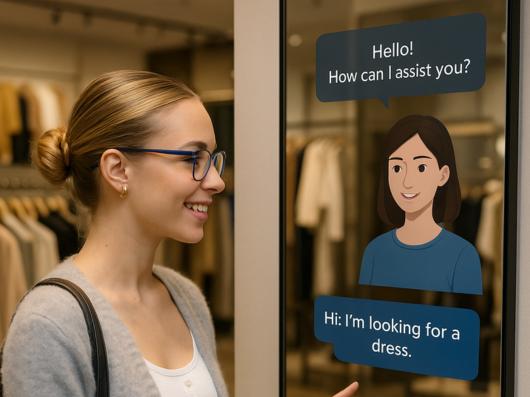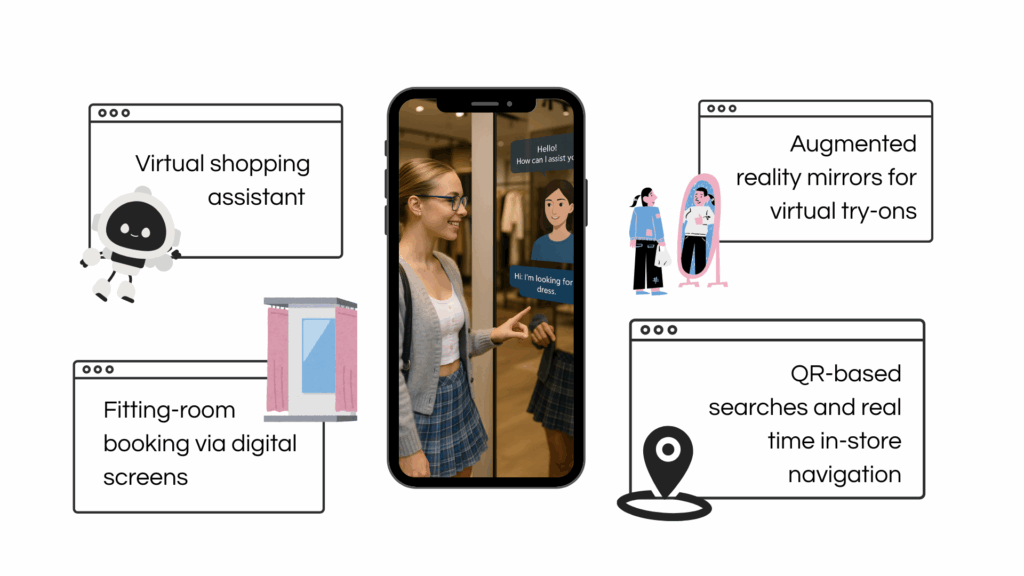I explored Bershka’s implementation of a conversational avatar to enhance customer experience through phygital and omnichannel innovation.
2024
ROLE
CX Researcher/ CX Strategist
TASKS
customer research, data analysis, UX strategy
PROJECT DURATION
3 months
READ TIME
5 min

The process
01. Project overview
02. Situation
03. Innovation proposal
04. Challenges and contingencies
05. Final takeaways & next steps
1. Project overview
Evaluation of the project briefing and main objectives with exploratory research to identify problems and create a hypothesis.
1.1 Context
Founded in 1998 as part of the Inditex group, Bershka operates over 1000 stores across more than 70 markets, representing a significant portion of the group’s revenue by quickly adapting to the latest fashion trends and understanding the needs of young consumers.
2. Situation analysis
To maintain its relevance, Bershka is revamping its flagship stores with interactive technologies like augmented reality for immersive experiences, but this has created an inconsistency in brand image across its locations. Recognizing issues like long queues and staffing limitations, Bershka aims to leverage technology to enhance customer service and ensure a consistent brand image across all its stores.
1️⃣ Store navigation & product availability
2️⃣ Overcrowded fitting rooms & long queues
3️⃣ Lack of personalization & interactive shopping
3. Innovation proposal
To bridge the gap between digital and physical retail, we introduce an AI-powered avatar—a digital assistant designed to enhance in-store experiences.

3.1. Key features

3.2. Goals
Create immersive experiences, using augmented reality to try on clothes virtually.
Personalize shopping, suggesting products based on customer profiles.
Optimize customer service, offering instant answers.
Reduce wait times in fitting rooms and checkout.
3.3. Business Model Canvas
This strategy follows the Business Model Canvas, incorporating:
✔ AI technology to power the avatar.
✔ Personalization and style to engage young audiences.
✔ Omnichannel optimization between physical and digital stores.
✔ Continuous evaluation through customer satisfaction and conversion KPIs.
Value proposition
To enhance the in-store experience, reducing frustrations related to navigation, fitting rooms, and personalization. This is the heart of the strategy, ensuring customers feel engaged and assisted efficiently.
Key activities
- Developing AI and augmented reality technology.
- Ensuring seamless omnichannel integration (bridging physical stores and online).
- Personalizing customer interactions for a more immersive and efficient shopping experience.
Key Resources
AI technology, retail data, in-store digital touchpoints, and secure cloud processing are essential to ensure smooth operations and high-quality responses.
Customer relationships
The avatar’s ability to provide instant assistance, queue management, and personalized product recommendations will directly impact satisfaction.
Channels
Physical store integration (smart mirrors, kiosks, and digital assistants) is crucial for making the avatar accessible at key touchpoints where customers encounter issues.
Cost Structure & Revenue Streams
Ensuring efficient investment in AI development, staff training, and digital infrastructure while considering monetization opportunities (e.g., premium AI services, enhanced shopping experiences) to maximize ROI.
4. Challenges & contingency plan
Privacy concerns, particularly for younger customers.
Data security, ensuring large-scale information processing complies with regulations.
User adoption, analyzing why customers might not engage with the avatar or virtual fitting room.
Corrective Actions
- Conduct user interviews to improve avatar experience.
- Optimize data protection policies for compliance with international laws.

